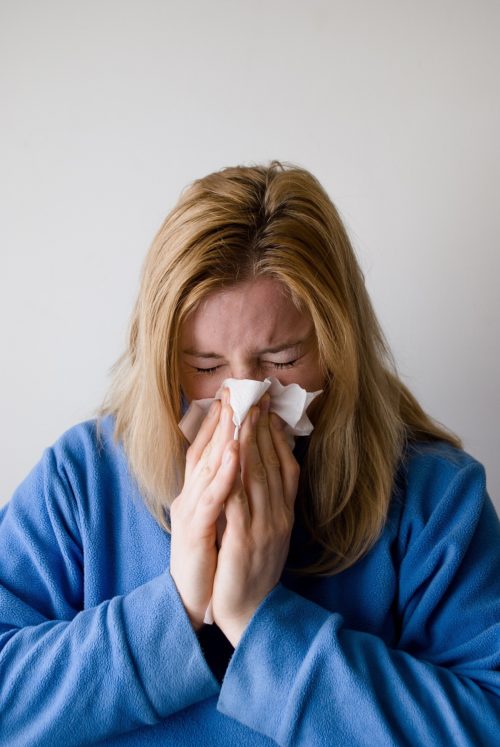
Image by Mojka JJ on Pixabay.
By Samantha Cook, Editor-in-Chief
Anyone who has worked in the service industry knows how difficult it can be to take time off from work. [1] Beyond the guilt of leaving co-workers short-staffed, sick leave is often unpaid, so workers who rely on every shift to make monthly payments will put their health on the back burner and turn up to work. [2]
To further its goal of remaining a “Most Livable City,” [3] Pittsburgh proposed an ordinance in 2015 that all eligible employees who work in the city limits are entitled to paid sick leave. The ordinance met its fair share of opposition, making it all the way to the Pennsylvania Supreme Court, [4] but it ultimately passed. The ordinance will go into effect March 15, 2020. [5]
What is the new rule?
The “Paid Sick Days Act” requires employers to provide sick leave to all employees performing at least 35 hours of work within the city of Pittsburgh. [6] Employers with more than 15 employees must bank one hour of paid sick time for every 35 hours an employee works, while employers with fewer than 15 employees must accrue one hour of unpaid sick time per 35 hours worked for the first year, but must begin offering paid sick leave in the second year. [7] For larger employers, the accrual caps at 40 hours annually, unless, of course, the employer wishes to offer more. [8]
Can Pittsburgh really do that?
A vast number of Pittsburgh-based employers challenged Pittsburgh’s authority to pass the ordinance. [9] The city derived its authority from the Home Rule Charter, a rule that a municipality can basically exercise any power not specifically barred by constitution or statute, and if there are any ambiguities in the municipality’s authority, a court will decide in the municipality’s favor. [10]
The City cited to the Pennsylvania Disease Prevention and Control Law, which permits municipalities with boards of health to enact ordinances relating to disease prevention and control. [11] In light of this state statute, and in conjunction with long-recognized authority to create regulations that protect public health and safety, [12] the court ultimately held that the Paid Sick Days act falls within Pittsburgh’s police power to regulate public health. [13]
Though there is no Pennsylvania-wide paid sick leave rule, a comparable ordinance exists in Philadelphia already. [14]
What are employers doing to prepare?
Businesses are scrambling to update their paid time off policies and procedures to comply with the new ordinance prior to March 15. [15] In order to prepare for the change, employers need to update their record-keeping and timekeeping procedures, modify policies to be consistent with the PSDA, and ensure that they provide notice to employees that they are entitled to sick leave. [16]
Although this may be an expensive change for employers, it is a positive step for workers who traditionally do not have access to paid time off, especially those who have frequent contact with the public, like food service workers. The Women’s Law Project submitted an amici curiae brief in support of the city and the SEIU. [17] The brief lent itself to the city’s argument that paid sick leave really is critical for regulating public health and safety. [18] The American Public Health Association’s research suggests that the United States lags behind developed countries in providing paid sick leave, which correlates with negative consequences on public health. [19] This ordinance is one of many possible measures to combat the spread of infectious diseases and level the playing field for lower-wage service employees.
[1] See, e.g., https://www.nytimes.com/2020/03/01/upshot/coronavirus-sick-days-service-workers.html; https://www.washingtonpost.com/national/as-coronavirus-spreads-the-people-who-prepare-your-food-probably-dont-have-paid-sick-leave/2020/03/04/7b35965a-5d51-11ea-9055-5fa12981bbbf_story.html; https://www.cdc.gov/nceh/ehs/ehsnet/plain_language/food-workers-working-when-sick.htm.
[2] Id.
[3] https://apps.pittsburghpa.gov/redtail/images/8549_Ordinance.pdf.
[4] Pa. Rest. & Lodging Ass’n v. City of Pittsburgh, 211 A.3d 810 (Pa. 2019).
[5] https://pittsburghpa.gov/office-of-equity/ordinance-guidelines.
[6] https://apps.pittsburghpa.gov/redtail/images/8548_Guidelines.pdf.
[7] Id.
[8] Id.
[9] Pa. Rest & Lodging Ass’n, 211 A.3d 810 at 819.
[10] Id. at 816-17.
[11] 35 Pa. Stat. Ann. § 521.16 (c) (LexisNexis, Lexis Advance through 2020 Regular Session Act 4; P.S. documents are current through 2020 Regular Session Act 4).
[12] Pa. Rest & Lodging Ass’n, 211 A.3d 810 at 826.
[13] Id. at 837.
[14] https://www.philalegal.org/node/233
[15] https://triblive.com/local/pittsburgh-allegheny/paid-sick-leave-requirement-daunting-for-pittsburgh-business-owners/
[16] https://www.ebglaw.com/news/prepare-for-paid-sick-time-in-pittsburgh-paid-sick-days-act-upheld-by-pennsylvanias-supreme-court/
[17] https://www.womenslawproject.org/wp-content/uploads/2018/02/WLP-Brief-Amici-Curiae-51-Organizations-57-64-WAP-2017-FINAL.pdf
[18] Id.
[19] https://www.apha.org/policies-and-advocacy/public-health-policy-statements/policy-database/2014/07/16/11/05/support-for-paid-sick-leave-and-family-leave-policies